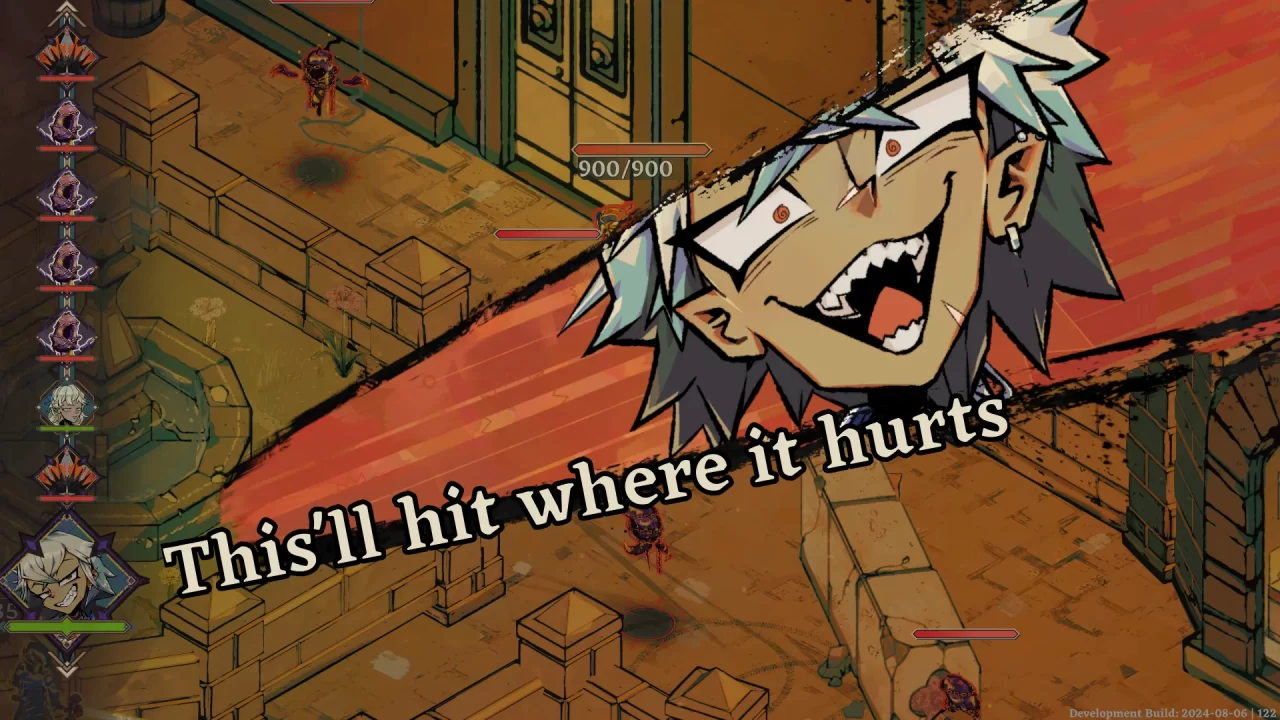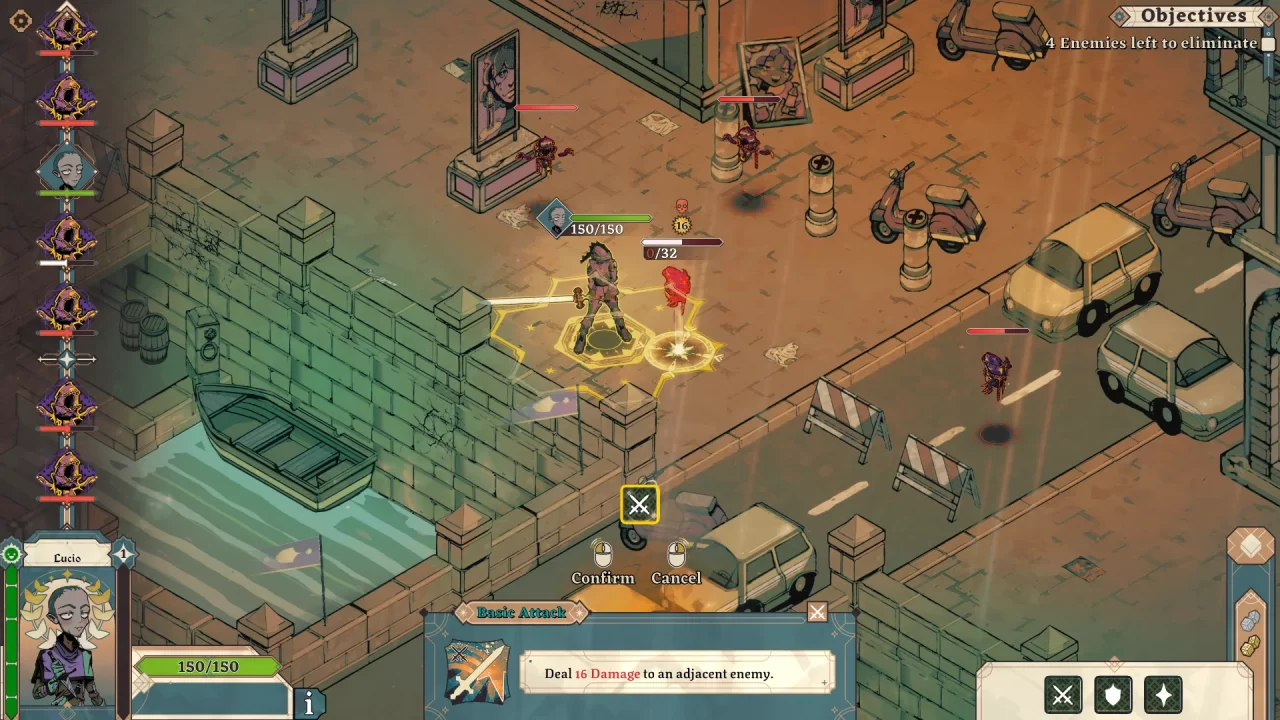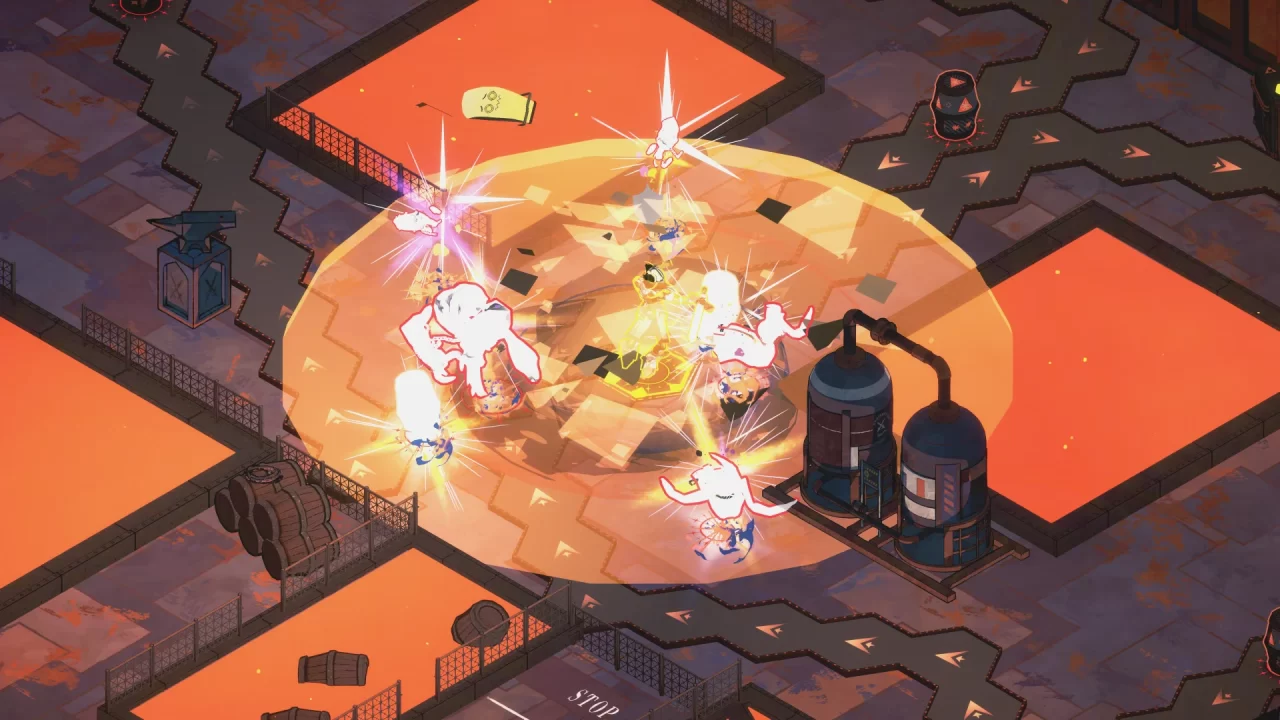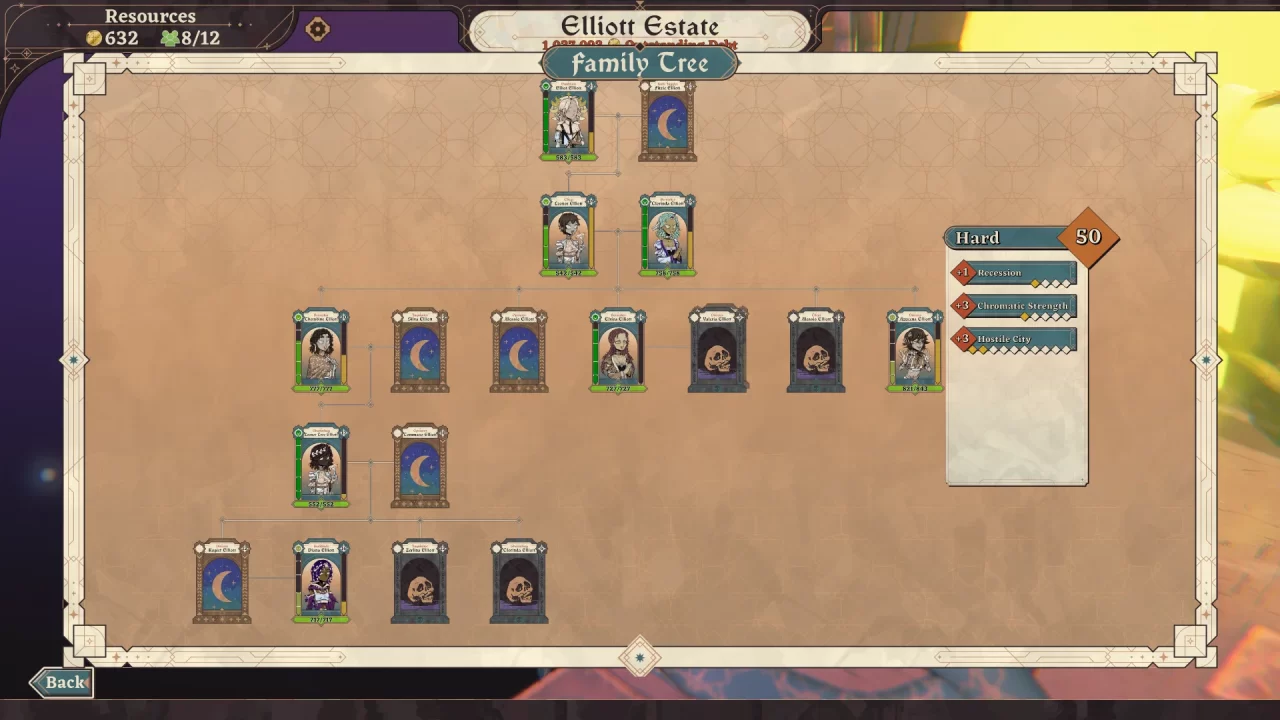Sometimes, a name hides far more than it suggests. Dice Gambit sounds like a modest, digital board game built around simple bets. So imagine my surprise when close inspection uncovered a cleverly designed tactical RPG packed with interlocking dice-based mechanics, sharp class-based combat, and nuanced visual flair. Though the game offers a limited variation in level scenarios and a fairly basic story, Dice Gambit brims with dense decision-making that encourages experimentation with strategies and combinations, accompanied by the satisfying clack-click of virtual dice. Ready your bones—this gambit is well worth the risk.
Dice Gambit unfolds in the Italian-esque city of Neo-Talis, where three ruling families each control a different aspect of urban life. You play as a custom-created scion serving as an Inquisitor: a member of the city’s security force tasked with clearing out Chromatics. These mischievous, amorphous blobs of color wreak havoc among the city’s residents whenever they spawn. Most of the narrative centers around running missions for each faction as they gradually pull the Inquisitors into their political schemes and personal agendas. The story holds together well, written with a comic, tongue-in-cheek tone that keeps things brisk. While family members can die permanently, individual losses carry little dramatic weight, akin to a rogue-lite. Narrative certainly is not the highlight of Dice Gambit although the level of customization (including different positive and negative traits) for each family member is impressive, as is the dynamic portrait art.
The Inquisitor’s home base functions as a hub for selecting quests and managing character progression. From there, you use the city map to choose missions aimed at clearing Neo-Talis of its chromatic infestations. Most missions unfold in the three main factions’ territory, ranging from bustling docklands and gritty city streets to sleek corporate high-rises. Dice Gambit shines with a distinctive art style that favors bright colors and exaggerated character expressions, giving each faction a unique visual identity through their livery and trim. Combat maps follow a painterly aesthetic, reinforcing each faction’s theme with similar, cohesive color palettes. The soundtrack mixes perky R&B, lite techno, and synthwave to keep the energy levels light, while scattered voiceover work adds some character.
All of this serves as flavorful side dressing—the Dice Gambit main course is the class and combat systems, which fully capitalize on a smooth, satisfying dice-rolling mechanic. Missions play out on hex-based grid maps, with characters and enemies acting in turn order based on initiative. To take any action, you roll dice to generate icons: Movement, Defense, Attack, Chroma, or Signature. Your available actions depend entirely on the results. Rolled a bunch of Movement and Defense? Maybe it’s time to reposition and play it safe. Movement and Chroma? That’s your cue to either dive into the fray or hold off—Chroma can substitute for any icon, but comes at a cost. It gradually empowers enemies. Bad roll? Use one of your limited rerolls to shift the odds. The system is fast, intuitive, and surprisingly deep. Even in its simplest moments, the decision-making feels empowering, and the complexity that unfolds only makes it more rewarding.
This core system ties seamlessly into character progression, where active and passive abilities unlock over time to use in battle. Each character has a set of stats to upgrade, directly influencing dice outcomes and ability effectiveness. For instance, Dice Power determines how many dice a character rolls per turn, and reaching each multiple of ten adds an extra die. Attack Power and Buff Power increase the potency of offensive and support abilities through a percentage of their value. In addition to a class-defined Signature ability (more on that shortly), characters can learn up to three active abilities and a variety of passives, assuming they survive. Active abilities require specific dice combinations to trigger. The devastating Lethal Strike, for example, demands four Attack icons, while the armor-boosting Inspire needs just a Movement and Signature die. It’s a smooth, elegant extension of the core dice mechanic, and one that enriches strategy without adding friction.
Stamina works differently from other stats and can’t increase in the same way. It measures a character’s level of exhaustion, and all stats take a percentage-based penalty as it drops. Overusing the same characters significantly lowers their combat effectiveness, making frequent rotation essential. Regaining Stamina also costs more than restoring Health, so swapping characters strategically becomes key to their survival and effectiveness. That said, the Stamina loss mechanic can feel overly punishing, even with a decent-sized roster. Don’t be surprised if the developers adjust it in the first few weeks or months post-launch.
Things get even juicier when you start combining interlocking abilities. Some attacks ignite the terrain or stack damage based on how far an enemy moves. Pair that with a character who can forcibly reposition enemies, and you can rack up serious damage, during and outside of their turns. Another strategy involves stacking armor buffs from one character onto another who deals damage every time they receive armor. Once again, damage can be outside the usual turn order. And that’s just a glimpse of the many combinations you can create.
Each family member’s ability and class progression depends on their core character class. You unlock these classes by raising reputation with different factions, so your choice of missions directly affects which classes become available and when. Early classes focus on simpler roles. The Berzerker excels at dealing heavy damage to multiple enemies and can restore health through active and passive abilities. The Vanguard specializes in defense, with smart ability synergies that reward stacking Armor. Later classes introduce more tactical depth. The Sniper deals high damage from long range, but often at the cost of movement or a wait time to the trigger, while the Translocationalist thrives on mass mobility. From the mid-point of the game, matching the right class to the right mission becomes essential. Once a character maxes out their first class, they can take on a new one. With careful planning, you can create hybrid builds like a glass-cannon Sniper who later pivots into a more defensive Vanguard.
Missions in Dice Gambit unfold as branching encounter points once you select them and choose the team. Each mission map is procedurally generated, giving the experience a rogue-lite feel. You encounter a mix of combat nodes, health recovery points, wealth nodes, and map-reveal nodes along the route. On larger maps, planning becomes increasingly important, since your party has a limited amount of Energy to move before reaching the final encounter. While some nodes can replenish Energy, finding them depends on the path you choose. Unfortunately, running out of Energy starts means losing character Stamina in order to move, or potentially leaving the mission early and wasting a week of time.
Chromatics make up most of the enemies in the game, appearing in mission types like clearouts, escort runs, and timed “grab-the-macguffin” objectives. Since the original demo, the developers have introduced a variety of new opponents. Now, you face chromatics that summon swarms of smaller units to overwhelm you, mobs that retaliate against melee attacks, and others that boost their allies’ armor. While the tactical variety keeps combat engaging, many enemies and maps start to blur together and lose their distinctiveness by the second act. This is partly due to their design—amorphous, chromatic blobs don’t naturally lend themselves to highly unique or visually striking appearances, but identifying their type is difficult on a busy battlefield. Would a little more distinctiveness hurt?
Dice Gambit deserves significant credit for its difficulty options, especially in supporting the game’s relatively short campaign and encouraging multiple playthroughs. While default settings exist, the developers built a nuanced system of customizable modifiers to allow players to fine-tune the challenge. These settings contribute to an overall difficulty rating and let players tweak specific aspects, such as increasing XP gain, weakening enemies, adding more dice, or boosting the number of rerolls. Players can activate any combination of these and the dozen or so further options, offering many permutations. Easier settings make it much simpler to build and maintain a consistent core family team. In contrast, higher difficulties require careful management of the family bloodline and a strong grasp of class synergies to succeed.
There’s much more worth a quick shoutout: the faction relationship awards to unlock classes and boost new character development; the way chromatics mutate with each Act, ramping up the difficulty as the story moves forward; and the terrain effects that can either teleport you across the battlefield or grant extra dice if you land on them. Once again, everything feeds smoothly into the core mechanics—it never feels like something thrown in just for the sake of complexity. And like the rest of the game, these elements roll out gradually, giving you time to adapt your strategy and learn each new twist as it comes.
A few criticisms arise from Dice Gambit’s ambition and complexity. While the tutorial covers the basics, it doesn’t offer much guidance on family or stat development. It’s easy to overextend by recruiting too many scions or, conversely, over-invest in just a few while still learning the systems. Mission crew requirements only appear once the missions show up on the map, so early runs can leave you over- or under-prepared without realizing it. Another issue is the environments. By Act Two, the same office floors, Renaissance-style streets, and docklands start to blur together. They look great, but the repetition makes them forgettable. More variety in map design or art assets would go a long way, in the same manner as the Chromatic enemy design. The randomization system is a barrier in this, but greater terrain variation would really help. Finally, I ran into the occasional soft-lock during turns, usually after alt-tabbing. These weren’t frequent, but when they happened, I had to restart the encounter from the beginning.
Honestly, these areas aside, Dice Gambit is a near-jackpot for me. With its combination of rich character and ability design and the smooth way it integrates rolling and manipulating dice, it’s proven an addictive presence. The original Italian Renaissance art style is the finishing touch that drives home Dice Gambit’s unique style and approach, even if it does outstay its welcome. Excited as I am to see where the developers and the game go next, I’m off to try a new run where, whenever dice are spent, all remaining dice are rerolled. Crazy! But hey, this is the way Lady Luck dances; let’s roll the bones.






